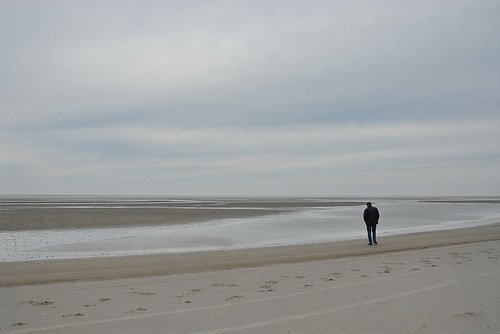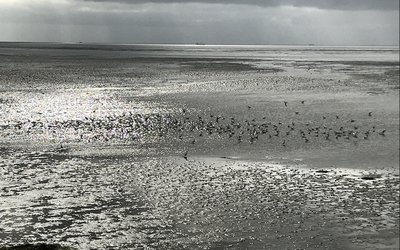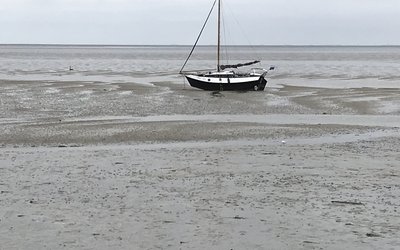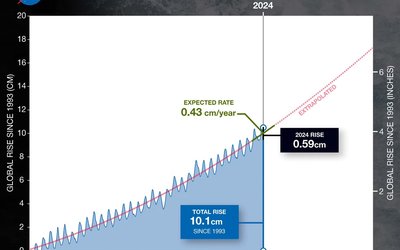
Model results indicate that the extensive tidal flats in systems such as the Dutch Wadden Sea may slowly diminish or even disappear entirely, which may have such massive socioeconomic impacts that the continued existence of some local communities may become untenable in the long-term. These results are based on a modelling approach over a 110-year study period with three different scenarios for Relative Sea Level Rise (RSLR): (a) No RSLR, (b) IPCC lower sea level rise (SLR) projection (0.2 m SLR by 2100 compared to 1990) and land subsidence, and (c) IPCC higher SLR projection (0.7 m SLR by 2100 compared to 1990) and land subsidence.
Model results indicate that under the No RSLR condition, the tidal flats continued to develop while under the high RSLR scenario the tidal flats eventually drowned, implying that under this condition the system may degenerate into a tidal lagoon. The tidal flats were more or less stable under the low RSLR scenario implying that this may be the critical RSLR condition for the maintenance of the system.
Uncertainties in the physical mechanisms governing tidal inlet response to RSLR are high, however; previous findings indicate that the tidal flats can keep up with much higher RSLR rates (up to 10.5 mm/year).
Source: Dissanayake, D. M. P. K., Ranasinghe, R. and J. A. Roelvink, 2012. The morphological response of large tidal inlet/basin systems to relative sea level rise. Climatic Change 113: 253–276.
Photo: unknown (www.flickr.com)








